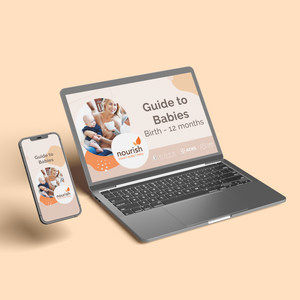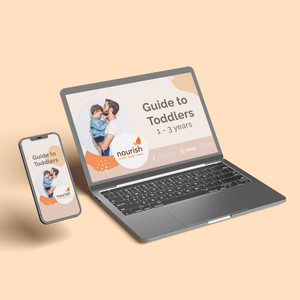Recent advance in brain research has provided great insight into how the brain, the most immature of all organs at birth, continues to grow and develop after birth. Up until the 1990s, it was thought that development was an unfolding of a predetermined genetic map
We know now that brain development is highly dependent on a child’s environmental experiences.
Babies’ brains are immature at birth and it is the brainstem that is responsible for the baby’s survival. The following are windows into how well the brainstem is functioning:
- Primitive reflexes
- Sleep/wake cycles
- Control of digestive system
- Regulation of heart and breathing
Primitive Reflexes
Primitive reflexes are survival reflexes; they come from the brain stem and they have to be inhibited for normal development to occur. A baby should develop head control by 2 months, integrate the startle (Moro) reflex by 3-4 months and gain the postural support reflex (bearing weight on legs when pressure is applied against the foot) by 4 months.
It is the development of the higher brain centres that inhibits (or integrates) the primitive reflex. We know that failure to integrate these primitive reflexes, in the normal development windows, is a reliable predictor for further interruption to normal development.
PlagiocePhaly
There has been a staggering increase in the incidents of deformational plagiocephaly. The rise has coincided with the 1992 “back to sleep campaign” for SIDS reduction. The interesting thing is that not all babies who ‘back sleep’ develop plagiocephaly. I find that babies that have underlying neck tension have a predisposition for developing flat head syndrome.
Do they grow out of it?
An important study by Speltz and Collett, published in February 2010 in the Journal of Paediatrics, concluded that “the present study provides the clearest evidence to date of neurodevelopment disadvantage amongst infants with plagiocephaly. We recommend that paediatricians pay close attention to the motor development of these infants”.
Many other studies have indicated other issues related to plagiocephaly and development. Miller and Clarren showed that 39.7% of patients with deformational posterior plagiocephaly required an individual education plan, with services such as special education, speech therapy, physical therapy and occupational therapy. Siatkowski and Fortney found changes to visual development.
A study of auditory processing by Balan and Kushnerenko found that “present data suggests that most of the plagiocephalic infants have an elevated risk of auditory processing disorders. The current study we demonstrated, for the first time, that the central sound of processing, as reflected by ERPs, is affected in children with plagiocephaly”.
What can be done?
It is no longer a viable strategy to watch and wait with children who have plagiocephaly or show signs of neurodevelopmental delay. Normal development can be assessed by checking for inhibition of the primitive reflexes and the emergence of motor control, which develops in a head to toe fashion. Early assessment, intervention and correction of structural or functional issues by a properly qualified practitioner are an important strategy in assisting these children.
NeuroPlasticity
Neuroplasticity research shows that brains are shaped by environmental experiences. All sensory perception is carried to the spinal cord and brain where it is integrated and the cortical maps of our brains are altered by this experience.
Children who have less interference to their nervous system have a better chance of making sense of their world and their place in it. They have a better opportunity to develop good motor patterns and balance, good emotional regulation and better learning strategies for the future.
references
- Case-Control study of Neurodevelopment in Deformational Plagiocephaly. Speltz Ml, Collett BR, Stott-Miller M, Starr JR, Heike C, Wolfram-Aduan AM, King D, Cunningham ML. Paediatrics. 2010
- Long Term development outcomes in patients with deformational plagiocephaly. Miller RI, Clarren SK, Paediatrics. 2000
- Visual field defects in deformational posterior plagiocephaly. Siatkowski J, Fortney AC, Nazir SA, Cannon SL, Panchal J, Francel P, Feuer W, Ahmad W. J APPOS. 2005
- Auditory ERPS reveal brain dysfunction in infants with plagiocephaly. Balan P, Kushnerenko E, Sahlin P, Huotilaninen M, Naatanen R, Hukki J. J Craniofac Surg. 2002
Our Products
-

01. Guide to a Healthy Pregnancy
$55 -

02. Positive Birthing Course
$55 -

03. Infant Feeding Guide
$55 -

04. Baby Sleep Guide - First 12 Months
$55 -

05. Toddler Parenting Course 1 - 3 Years
$55
-
 When to Start Antenatal Classes?
When to Start Antenatal Classes?
Becoming a parent is an incredible milestone, but it comes with a host of changes that can be daunting, especially for first time parents. Antenatal classes are all about offering expectant parents the education they need to make informed decisions, look after their bodies and care for their newborn babies. While you probably already have a long list of things you need to accomplish during your pregnancy, it’s a good idea to make time to attend antenatal classes.
-
 Development Milestones 4-8 Months
Development Milestones 4-8 Months
As they reach the middle of their first year, you'll start to see bigger leaps in their growth and ability!
In this article, we’re going to discuss your baby’s developmental milestones between 4-8 months, and what you can expect along the way.





 When to Start Antenatal Classes?
When to Start Antenatal Classes?
 Development Milestones 4-8 Months
Development Milestones 4-8 Months








